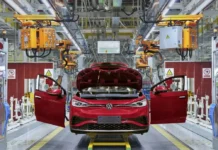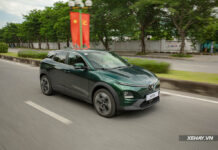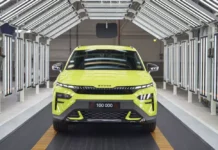In recent years, the Vietnamese automotive market has witnessed the emergence of plug-in hybrid electric vehicles (PHEVs). These vehicles are highly regarded for their fuel efficiency, flexible operation, and alignment with the “green” trend in the transportation sector.
However, many consumers still have concerns and questions about PHEVs: Where can I charge a PHEV? What are the costs like? Is maintenance complicated? Do the batteries degrade quickly?
This article aims to address these common questions and provide consumers with a better understanding of this emerging technology.
Is charging a PHEV difficult?
Unlike pure electric vehicles (EVs) that require high-power charging infrastructure, PHEVs can be charged at home using a standard 220V electrical outlet. Depending on the battery capacity (typically ranging from 10-20 kWh), charging times can vary from 3-6 hours using a regular wall outlet.
For faster charging, individuals can install a wallbox (a wall-mounted charging station) for approximately 15-25 million VND, reducing charging time to 1.5-3 hours.
Public charging stations are also beginning to support PHEVs (depending on the charging standard). However, as the all-electric range is typically around 40-60 km, most users find that home charging is sufficient for their daily commutes.
Are there significant cost savings?
The answer is yes, provided that users regularly charge their vehicles using electricity instead of gasoline. In practice, driving approximately 40 km per day using electricity costs only 8,000-10,000 VND, significantly lower than the 50,000-70,000 VND it would cost to drive the same distance with gasoline, depending on the vehicle model and traffic conditions. On average, users can save 1-1.5 million VND per month compared to a gasoline vehicle in the same segment.
However, for those who cannot charge regularly and have to use the vehicle like a standard hybrid, PHEVs may be less efficient due to the additional weight of the battery and electric motor, resulting in higher fuel consumption.
What about maintenance and battery lifespan: Are there concerns?
One often overlooked advantage of PHEVs is that the electric motor requires little to no regular maintenance compared to gasoline engines, resulting in long-term cost savings. Since the vehicle can operate in pure electric mode in urban conditions, the wear and tear on the combustion engine is also significantly reduced.
However, high-voltage systems such as batteries, electric motors, and inverters still require periodic inspections at authorized service centers. Technicians must be properly trained and equipped with specialized tools. Manufacturers typically recommend checking the battery every 2-3 years and advise against maintenance at regular garages to ensure safety.
Regarding battery lifespan, most PHEVs use lithium-ion batteries with a lifespan of 8-10 years, equivalent to 150,000-200,000 km when used correctly. Most manufacturers offer battery warranties ranging from 5-8 years or 100,000-160,000 km, providing peace of mind for consumers. In the event of a battery replacement, the cost ranges from 70-120 million VND, depending on the technology and brand.
Proper charging practices, such as avoiding frequent complete discharges of the battery, can extend its lifespan and reduce the risk of unexpected failures.
Who is the PHEV a good choice for?
PHEVs are ideal for individuals who regularly travel less than 50 km per day within urban areas and have access to home or workplace charging facilities. They are also a suitable option for those looking to save on fuel costs but are not yet ready to switch to a pure electric vehicle due to concerns about charging infrastructure and initial investment.
On the other hand, if regular charging is not feasible or long-distance travel is a frequent occurrence, and fuel costs are not a primary concern, then a standard hybrid (HEV) or traditional gasoline vehicle may be a more practical choice.
PHEVs are not a futuristic concept but a practical solution for the present, especially in Vietnam, where public charging infrastructure is still being developed. While they require an initial investment, PHEVs can become a trusted companion for urban dwellers, offering both personal and business mobility, provided they are utilized correctly.
Unveiling the Haval Raptor: Retaining its Off-Road Charms with a Rugged Facelift
I hope that captures the essence of your request. Let me know if you would like me to tweak it further or provide additional content related to this topic.
Great Wall Motor has unveiled the latest addition to its lineup – the Haval Raptor. This new variant boasts a traditional internal combustion engine, offering a different option to the current plug-in hybrid model available in China. With this reveal, the automaker teases an exciting prospect for car enthusiasts who appreciate the classic appeal of combustion engines.
“Honda Vietnam Extends Engine and Transmission Warranty by Two Years”
To offer a complete and worry-free experience to its customers, Honda Vietnam (HVN) is extending an additional two years of engine and transmission warranty for all its car models. This is an expression of their commitment to ensuring peace of mind for Honda car owners on every journey they embark upon.
















































![[CAR REVIEW] Honda CR-V e:HEV: Perfect for Families](https://vnauto.net/wp-content/uploads/2024/02/xehay-hondacrv-14072023-1-100x70.jpg)
